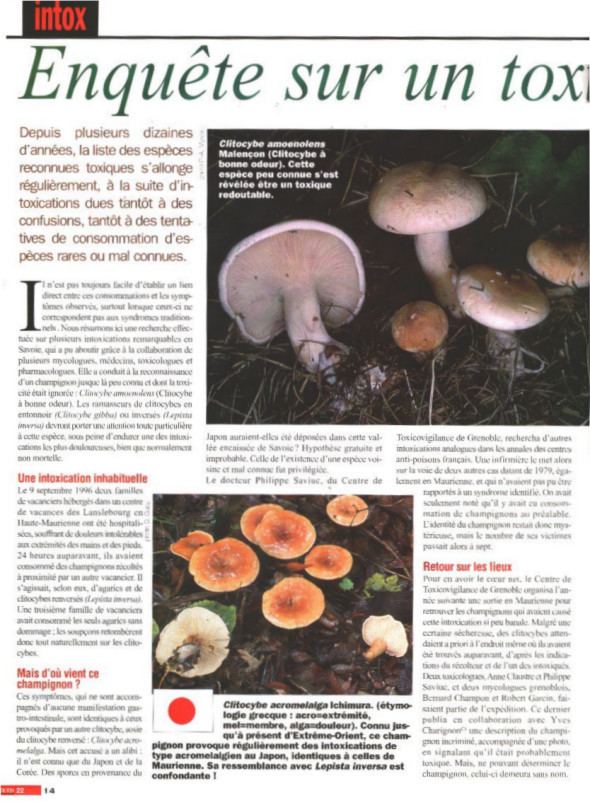Kingdom Fungi Class Agaricomycetes Scientific name Clitocybe amoenolens | Division Basidiomycota Order Agaricales Genus Paralepistopsis Rank Species | |
 | ||
Similar Clitocybe acromelalga, Paralepista flaccida, Amanita proxima, Clitocybe dealbata, Amanita smithiana | ||
Paralepistopsis amoenolens, commonly known as the paralysis funnel, is an agaric fungus ascribed to the large genus Clitocybe. It was originally described from Morocco in 1975 as Clitocybe amoenolens by the French mycologist Malençon. It was discovered to be poisonous after several people had consumed specimens all found in the alpine Maurienne valley in the Savoie department over three years. They had mistaken it for the edible common funnel cap (C. gibba) or Paralepista flaccida (formerly Lepista inversa).
In 2012, following DNA analysis, Vizzini and Ercole assigned this species to the new genus Paralepistopsis, which forms a separate clade from other Clitocybes. This change has been accepted by Species Fungorum and the Global Biodiversity Information Facility and so the correct name is currently Paralepistopsis amoenolens.
A similar species from Japan, C. acromelalga, known as the poison dwarf bamboo mushroom, had been discovered to be poisonous in 1918.
The resulting syndrome of fungus-induced erythromelalgia lasted from 8 days to 5 months, although one person exhibited symptoms for three years.
